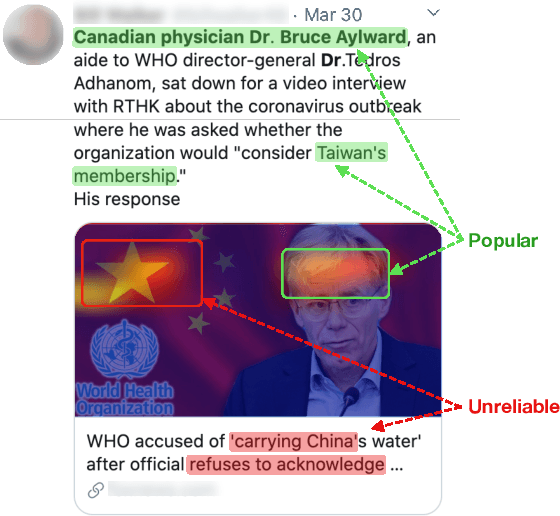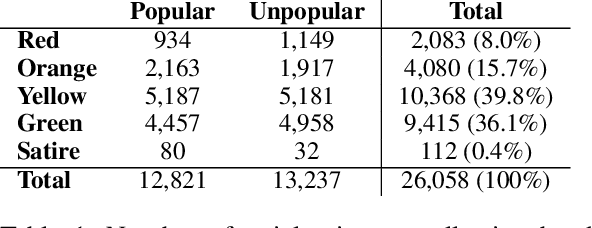Visual Persuasion in COVID-19 Social Media Content: A Multi-Modal Characterization
Paper and Code
Dec 05, 2021



Social media content routinely incorporates multi-modal design to covey information and shape meanings, and sway interpretations toward desirable implications, but the choices and outcomes of using both texts and visual images have not been sufficiently studied. This work proposes a computational approach to analyze the outcome of persuasive information in multi-modal content, focusing on two aspects, popularity and reliability, in COVID-19-related news articles shared on Twitter. The two aspects are intertwined in the spread of misinformation: for example, an unreliable article that aims to misinform has to attain some popularity. This work has several contributions. First, we propose a multi-modal (image and text) approach to effectively identify popularity and reliability of information sources simultaneously. Second, we identify textual and visual elements that are predictive to information popularity and reliability. Third, by modeling cross-modal relations and similarity, we are able to uncover how unreliable articles construct multi-modal meaning in a distorted, biased fashion. Our work demonstrates how to use multi-modal analysis for understanding influential content and has implications to social media literacy and engagement.
 Add to Chrome
Add to Chrome Add to Firefox
Add to Firefox Add to Edge
Add to Edge